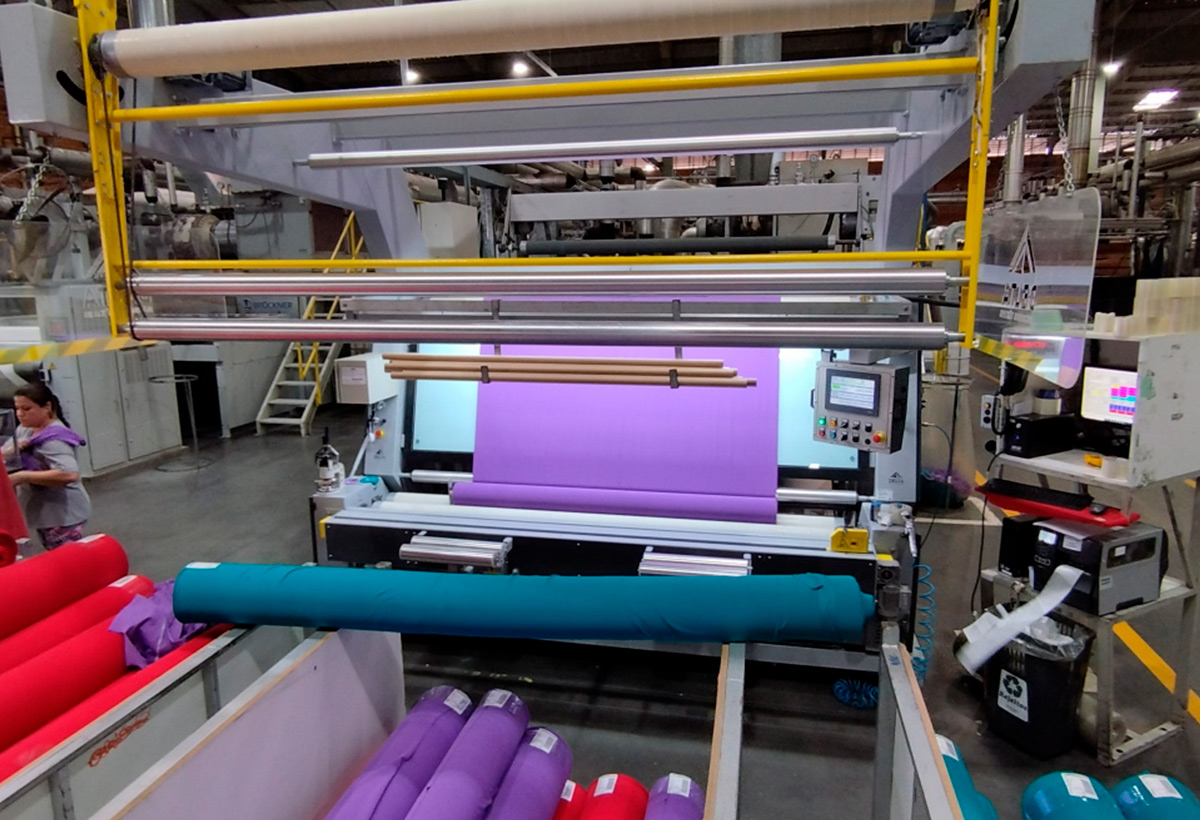Today, innovation is part of the clothing manufacturing industry! There is no longer room for resistance regarding technology investment. After all, they are capable of guaranteeing competitive advantages to the sector, contributing to the marketing evolution of the company.
Do you want to understand more about the subject? So, below, find out what are the main reasons and benefits of having management focused on process innovation in the clothing factory.
Why innovate in clothing manufacturing?
Innovation is nowpart of the DNA of the clothing sector and the entire textile industry. That is, this investment is no longer optional or a differentiator!
Not using it to your advantage is synonymous with productive loss and impacts on your financial health. Refusing to see this scenario is the same as accepting to be left behind in the midst of competition.
It’s that simple! With the arrival of Industry 4.0, digitalization and the use of technologies to automate production processes have become part of the industry’s daily routine. After all, this transformation generates optimization for the entire chain.
In this sense, clothing 4.0 appropriates4.0 technologies (coming from Industry 4.0), to contribute to production efficiency. For example:
- Cloud computing;
- 3D printing;
- Big Data;
- Augmented Reality;
- Artificial Intelligence (AI), and others.
Here, robotic equipment and machines operated by software are responsible for improving manufacturing. Innovative solutions can be used from customer service to automating repetitive tasks.
Furthermore, these technologies, applied to manufacturing, contribute to the quality of the product by positively impacting production processes. Therefore, investment in innovation is more than necessary for clothing manufacturing.
In short, despite the need to adapt to new technologies and the concept of industry 4.0, the textile sector still leaves something to be desired when it comes to automation.
Despite the use of machinery and devices, the focus on innovation needs to be enhanced. This factor influences delays in processes and production.
So, check out 6 reasonsfor clothing manufacturing companies to innovate!
Read also: Clothing in Industry 4.0: What is the real productive gain?
1. Production efficiency
Efficient machines and innovative systems allow productivity in clothing manufacturing to increase. Intelligent and updated devices enable a greater quantity of parts to be produced following the established quality standard.
Due to repeatability and standardization, generated by automation, it will be possible to eliminate human errors. This increases production efficiency and process optimization.
For example, the Sample Washer from Delta Máquinas Têxteis helps to reduce the time of sample testing processes. They took about 3 hourswith a domestic washer, with the Delta solution, were completed in 15 minutes.
Furthermore, the technologies presented by clothing 4.0 contribute to the generation of intelligent data and more assertive decision-making. The information is prepared in real time, helping to understand the reality of the factory. This also aids in the ability to simulate processes and predict scenarios.
In other words, it will be possible to obtain important information for the operation. Such as precise data on width, usable area, grammage and yield. Therefore, there will be a way to avoid collecting the spreading roll.
Read also:Textile machines: find out the ideal model for your production
2. Cost reduction
Manual, delayed tasks that use outdated machinery end up being more expensivefor the clothing manufacturing industry.
This happens because there are greater chances ofwastingraw materials and mistakes made by employees, as we saw above.
Suchcosts mean losses and a significant loss of resources. Therefore, its reduction is the first and most noticeable result of investing in Innovative solutions.
There are already machines controlled by software and which have systems that use the exact amount of raw material. All this without losses or productive errors. Other examples of innovation that help reduce costs are:
- Digital printing;
- Electronic or laser cutting;
- Separation tables;
- Nanotechnology;
- Artificial intelligencefor tissue review, and others.
TheSample Washer mentioned above, for example, guarantees savings of, on average:
- 80%of water;
- 75%of material waste;
- 50% do non-quality costs.
3. Product quality
Through data control and increased productivity, it is possible to increase product quality. Some innovative equipment, available on the market, contributes even more to the final result.
For example, Delta Reviewers help with the review of fabricsa step that is not very common in the industry. Clothing manufacturing companies often purchase materials without checking the quality and finish. And this created problems due to dimension errors, generating waste and expenses.
Therefore, with this innovative solution it is possible to avoid low quality of the manufactured parts. Not to mention that it helps to evaluate the commitment and efficiency of raw material suppliers.
4. Competitive advantage
In the current competitive scenario, it is essential to seek to generate business value for the market.
As stated, using innovations and technologies allows your industry to have production processes with standardized quality. And it also reduces important costs, which are factors that make it possible to increase competitiveness.
The competitive advantage is what only your company can offer to the consumer. An example of this are smart accessories and clothing made using technological materials and which enable the user’s physical performance to be monitored.
Furthermore, it is possible to cite as an example:
- Pet hair yarn and plastic bottles;
- Clothes made from banana stems;
- Flame retardant or flame retardant fibers;
- Fish skin bag;
- Fabrics with liquid barriers and self-healing fabrics;
- Fabrics with ultraviolet protection;
- Interactive Clothing;
- Fabrics that change color, and more.
Not to mention that it will be possible to develop mass customized products. This, in fact, continues to be a trend in the sector that directly affects the final consumer’s purchasing experience.
Differentiators like these attract the attention of customers and retailers, adding value to products. However, this search for a difference is only possible and efficient when you can count on innovative solutions.
Therefore, clothing that does not follow this evolution is doomed to become outdated and obsolete.
5. Alignment with changes in consumer habits in clothing manufacturing
A few years ago, no one imagined being able to shop at the supermarket without leaving home, or even buy clothes without leaving the sofa. Like many companies, consumers also adapt to technologies and change their consumption habits.
The demand for clothing and technological materials that respect the environment is already noticeable. Including, according to the Pinterest Predicts 2024, reducing waste continues to be a top goal for consumers.
“What doesn’t serve one person may be another’s treasure. Even more so now that generation X and boomers will transform scraps, wood and other recycled materials into new pieces and objects”, according to the report.
Therefore, it is necessary to meet this demand and new consumption requirements with the help of clothing 4.0. The ideal is to always be up to date with market needs, as it is volatile and immediate.
Read also: Understand what they are and how to avoid textile waste
6. Sustainability in clothing manufacturing
In addition to the previous topic, innovations contribute to the need for sustainability in clothing manufacturing.
The awareness of consumption habits among the population is already notable. The search for sustainable materials, clothes and accessories is already a reality.
In this sense,textile technology and process innovation seek to replace polluting and non-renewable materials. In addition to encouraging the study of new raw materials, such as synthetics and new fibers, reuse of resources and correct disposal.
What does technology have to do with it?

Investment in technological machines and equipment is essential to achieving trends in the clothing manufacturing market. These technological tools and methods can be used to increase the production capacity.
And, as we have seen, they also contribute to increasing opportunities and developing innovative products. Not to mention that innovative production allows the change of production models to procedures that use smaller amounts of water and focus on reuse, for example.
The time is for adaptation and innovation of production processes! After all, those used a few years ago are no longer enough to meet consumer demand.
So, don’t see innovation as an enemy, but rather as the gateway to growthand profitability opportunities.
According to data from Sudene (Superintendency of Development of the Northeast), technological innovation in the sector is perceived by the regular updating of the machine park, with reference to the technology used in the national market.
This is the answer to financing innovation with resources from companies themselves. In the textile sector, this practice represents 98,9%and, in clothing, 92,9%, (higher than the manufacturing industry).
It is noteworthy that a large part of the investment in innovation is allocated to production machines and equipment. Thus generating a total of more than 62%.
To understand more about the impact of technology on the optimization and efficiency of textile production, download our complete e-Book.



